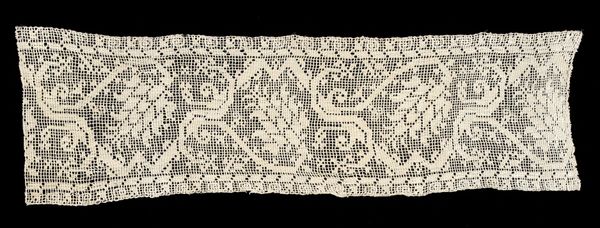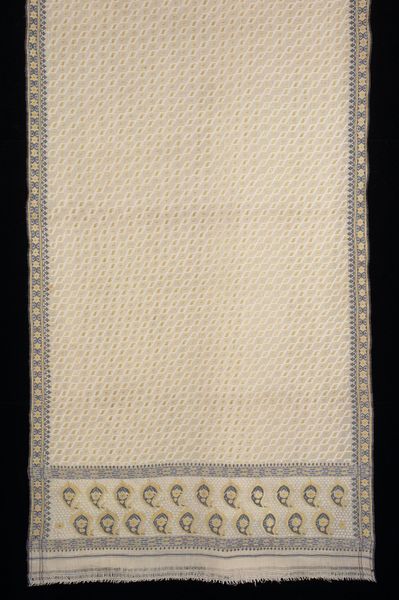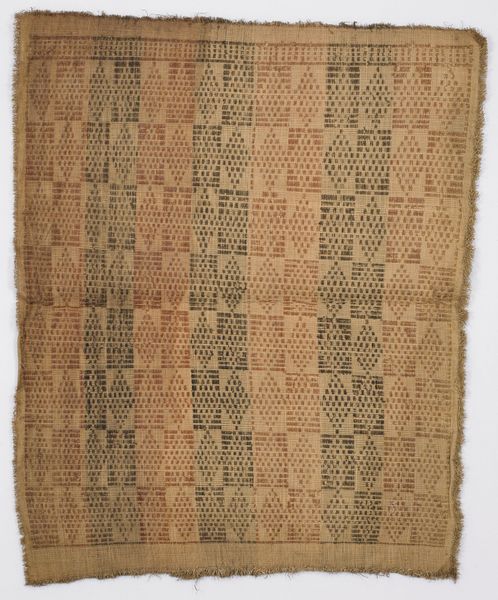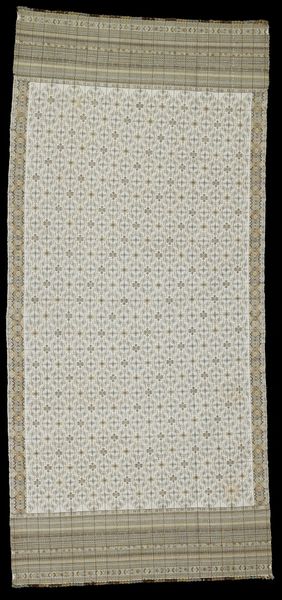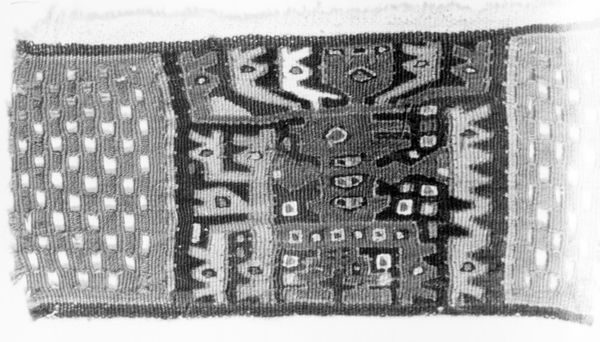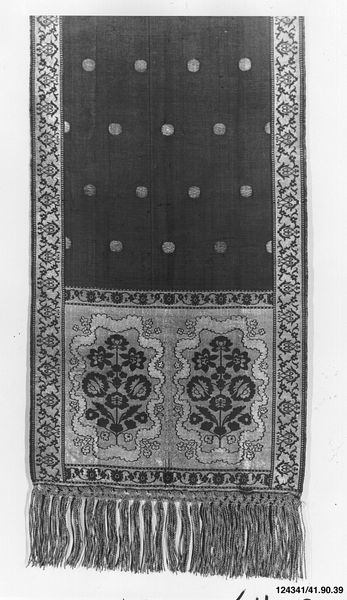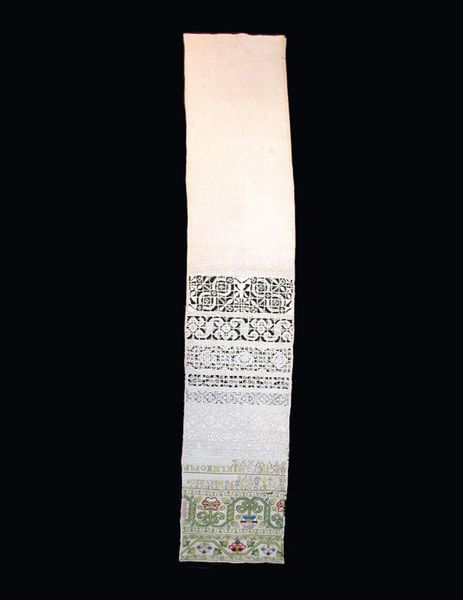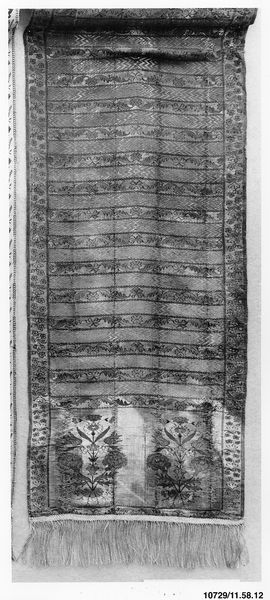
weaving, textile
#
weaving
#
textile
#
geometric pattern
#
geometric
Dimensions: 62 x 3 1/4 in. (157.48 x 8.26 cm)
Copyright: Public Domain
Curator: This textile piece, simply called "Band," is an object whose past echoes into our present. An anonymous work from around the 16th century, it's held here at the Minneapolis Institute of Art. The weaving...it calls to something almost primal. Editor: My first impression? Restraint. But restraint brimming with hidden codes. It’s all those tight, geometric patterns…like an equation for survival whispered across generations. What did they use it for, this band? Curator: That's the delightful mystery! Bands like this would've adorned clothing, perhaps belts, headbands. Consider its life— witnessing secrets in dimly lit chambers or bold proclamations shouted into sun-drenched squares. Editor: And the maker, presumably a woman...what did adornment signify then? Was it status? Spiritual connection? Or a rebellious whisper against the expected? These aren’t simply decorations, are they? Curator: Heavens no! Every carefully placed thread feels imbued with intention, doesn’t it? Like ancient computer code almost, it has layers upon layers of information hidden to us in our modern sensibilities, yet clearly it carries echoes of that initial making. Editor: This band feels heavy with silent power. The way that geometric repetition grounds it—almost weaponizes it—for some unspoken cause...And what about the anonymity? How does the erasure of a singular name play into a larger history of female artistic labor? Curator: It could signal a collective creation or simply highlight a maker’s conscious decision not to be recognized for her art, an anonymity perhaps necessitated or enforced upon the women artisans in earlier times? I can also appreciate the democratization of it, so many of these arts went unsigned and their beauty lies precisely in the mystery. Editor: Absolutely, the beauty and the complexity of their experience lives in its form. Looking closer, the detail suggests a radical act of defiance against a society of imposed obedience—through the simple art of weaving. Curator: You are likely on the right track. In this very object, we find encoded histories—of labor, power, and women's enduring presence—silently, brilliantly woven in textile. A true treasure. Editor: I’m left seeing more in this 'simple' band than I thought existed; a meditation on women's histories, wrapped into an unexpected act of resistance, all tied together with tiny woven knots.
Comments
minneapolisinstituteofart about 2 years ago
⋮
Desiring a lighter, airier quality, an openwork background was created by using a tight wrapping stitch on a plain woven linen fabric, leaving the unaltered cloth as the decorative element. The figural subject matter relates to the story of St. George and the Dragon, suggesting that this strip was created for a religious vestment or parament.
Join the conversation
Join millions of artists and users on Artera today and experience the ultimate creative platform.
